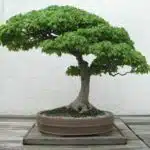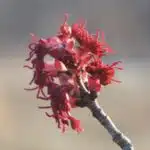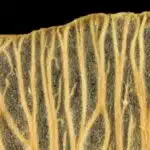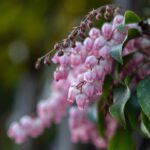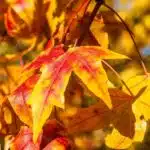The Japanese maple tree (Acer palmatum) has long been treasured for its beauty and grace. It’s no wonder why this ancient species of tree is a favorite among gardeners around the world! But what if you want to grow and care for your own Japanese maple tree? Is it as simple as planting it in the ground and providing some water?
As it turns out, there is much more to growing and caring for Japanese maple trees than meets the eye. Many people believe that these trees are difficult to care for, but with the right information, anyone can enjoy the beauty of a Japanese maple tree in their own backyard. With this article, we’ll explore what makes a successful Japanese Maple Tree and how you can go about growing and caring for one.
We’ll also look at some common mistakes made by novice gardeners when taking care of their Japanese maples. By avoiding these costly errors, you can save yourself time and money while ensuring that your new tree will thrive in its new environment. Let’s get started on our journey into learning how to grow and care for Japanese maples!
Choosing A Japanese Maple
Did you know that Japanese Maples are one of the most popular trees in the world? Not only do they provide beautiful foliage, but they also require less maintenance than many other kinds of trees. Choosing a Japanese Maple for your garden is an important decision, and there are a few things to consider before making your choice.
When selecting a Japanese Maple for your landscape, it’s important to consider the size and shape of the tree. While some varieties reach heights of 30 feet or more, others stay small enough to fit into smaller gardens or even containers. You should also take into account the color of its leaves; some have red or purple foliage while others are green with yellow or orange accents.
It’s also essential to think about where you will be planting your new tree. Most Japanese Maples prefer partial shade and well-drained soil; however, some varieties can tolerate full sun if they’re planted in an area with protection from strong winds and afternoon heat. Additionally, it’s helpful to keep in mind how much pruning you’re willing to do when selecting your tree since some varieties need more care than others.
With all these factors taken into account, you’ll be able to find the perfect Japanese Maple for your garden! From there, it’s time to start planting so that you can enjoy its beauty for years to come.
Planting A Japanese Maple
Ah, the Japanese Maple tree! It’s a sight for sore eyes and a lovely addition to any garden, but it takes more than just planting one to ensure that it thrives. Planting a Japanese Maple might seem simple enough, but if you truly want yours to stand out from the crowd, there are some key steps you should follow. Surprisingly, irony can be found in this process!
First things first: before you even think of planting your Japanese Maple, you must understand the area in which it will grow. The type of soil and amount of sunlight required to keep your tree healthy will depend on the variety that you purchase. For instance, some trees prefer moist soil while others thrive in dry environments.
Next up is the actual planting process. This is where many people get stuck and end up skipping important steps – we’ve all been there! Here’s how to do it right:
- Dig a hole twice as wide as the root ball of your maple tree;
- Place your maple tree into the hole and fill it with soil;
- Water your tree well and add mulch around its base.
Finally, once planted correctly, don’t forget about your new addition! Regularly water and fertilize your Japanese Maple for best results – this will help ensure that it develops strong roots and healthy branches over time. With care and attention, you’ll have an incredible looking specimen before you know it – no need for irony here!
Understanding Sun And Shade Requirements
Japanese maples are one of the most popular garden trees around, with an estimated 50 million planted worldwide. Knowing how to properly care for them is essential in order to ensure their health and longevity. One important aspect of caring for your Japanese maple is understanding sun and shade requirements.
When it comes to sunlight, Japanese maples are best suited to areas where they receive morning sun and afternoon shade. This kind of environment will allow your tree to get all the light it needs while avoiding the intense heat of midday. When planting a Japanese maple, try to place it in an area that gets bright shade or dappled sunlight so that its foliage can remain vibrant and healthy.
On the other hand, too much shade can cause your Japanese maple to become leggy and weak due to lack of light energy. If you don’t have an area in your garden that meets these requirements, you may need to supplement the tree’s natural lighting with artificial lighting such as LED or incandescent bulbs. Doing this will help ensure that your tree gets enough light energy without becoming over-exposed or damaged by too much direct sunlight.
With proper sun and shade requirements understood, it’s now time to look at how best to water your Japanese maple.
Watering Your Japanese Maple
Watering your Japanese Maple is an important part of its care. Without proper hydration, it can become stressed and not reach its full potential. Luckily, this isn’t too difficult to do! Here are some tips on how to water your Japanese Maple correctly:
Make sure you water it deeply but not too frequently. You want to make sure the soil is moist but not soggy. Aim for about once or twice a week when there’s no rain.
Water in the morning so that it has enough time to dry out before nightfall. This will prevent fungal diseases from forming on the leaves due to prolonged exposure to moisture.
When you do water, focus on the roots and not just the leaves. Use a garden hose or a watering can with a long-spout attachment to reach the roots directly instead of just sprinkling over them from above.
If you’re having trouble deciding how much water your Japanese Maple needs, stick your finger into the soil about two inches deep and feel for moisture. If it’s still damp even after a few days of no rain, it’s best to wait until it starts feeling slightly dry before watering again.
By following these simple guidelines, you can ensure that your Japanese Maple stays healthy and gets all the hydration it needs without being overwatered! Now we’ll move on to another important aspect of caring for your Japanese Maple – soil requirements.
Soil Requirements For Japanese Maple Trees
The Japanese maple tree is a visual feast for the eyes, with its lacy leaves and vibrant colors. But to ensure your tree grows healthy and strong, it’s important to pay attention to soil requirements. Here’s what you need to know.
A good soil mix should be slightly acidic, with a pH of 6.0-7.0. It should also be well-draining and rich in organic matter, such as compost or leaf mold. If your soil is sandy or clay-based, you can add peat moss or composted manure to improve drainage and aeration. In addition, adding mulch around the base of the tree will help retain moisture and keep weeds at bay.
When it comes to planting your Japanese maple tree, dig a hole that is twice as wide as the root ball and roughly equal in depth. This will give your roots plenty of room to grow without becoming waterlogged or compacted. With proper soil requirements met, you can look forward to years of beauty from your Japanese Maple!
Fertilizing Japanese Maple Trees
Now that you know the soil requirements for your Japanese maple tree, it’s time to take a look at fertilizing. Fertilizer is essential for providing your tree with the nutrients needed for its growth and health. When it comes to fertilizer, slow-release types are the best options as they provide a steady supply of nutrients over an extended period of time. Plus, they don’t require frequent applications like liquid fertilizers do!
When applying slow-release fertilizer to your Japanese maple tree, use one pound of fertilizer per 100 square feet of soil surface. Spread the fertilizer evenly throughout the root area and water it in thoroughly after application for best results. It’s also important to note that nitrogen levels should be kept low in order to keep the foliage from becoming too lush and preventing flowers or fruits from forming.
It’s best to fertilize your Japanese maple tree two or three times a year during early spring, mid-summer, and late fall. This will help ensure that your tree is getting enough nutrients during its growing season and can help promote healthy growth. With these tips in mind, you’ll be on your way to successfully caring for your Japanese Maple Tree! As you move forward with caring for this beautiful plant, don’t forget about pruning – which will be discussed next!
Pruning Japanese Maple Trees
Pruning is a pivotal part of proper care for Japanese Maples. Practicing the proper pruning techniques can help ensure that the tree flourishes in its environment and remains healthy. Perfecting these pruning practices requires patience and precision, but with a bit of practice and perseverance, it can become second nature.
First and foremost, it’s important to understand the basics of Japanese Maple pruning. The best time to begin is after the tree has had some time to settle into its new location during summer months; this will help reduce transplant shock. Once settled, look for dead, diseased or damaged branches and remove them. Then, thin out any thick branches as well as those that are overcrowded to improve air circulation. Finally, prune off any shoots that are growing downwards into the ground; these will sap away energy from other parts of the tree if left unattended.
In addition to basic pruning methods, there are also several other more advanced techniques that may be beneficial for certain trees or situations. Coppicing is a method which involves cutting back branches close to the main trunk; this helps stimulate growth in areas where it would otherwise be sparse or slow-growing. Crown lifting is another useful technique which involves removing lower branches in order to increase light penetration and visibility around the base of the tree. Lastly, pollarding involves trimming back all upper branches on an annual basis; this helps keep trees smaller in size while still allowing them to produce new foliage each year.
For Japanese Maples, taking the time to practice good pruning habits can make all the difference when it comes to proper care and maintenance over time. With patience and practice comes success – so spend some extra time learning these techniques today so you can enjoy your beautiful maple tree for years to come!
Controlling Pests And Diseases
Pruning Japanese maple trees is a great way to maintain their health, but controlling pests and diseases is also important. Pests and diseases can cause serious damage to these beautiful trees, so it’s important to take steps to prevent or treat them. Here are some tips for controlling pests and diseases:
• Preventative Measures: Taking preventive measures such as regularly checking the tree for signs of disease or infestation, keeping the area around the tree clean, and using pest control methods like mulching or spraying insecticides can help keep your Japanese maple healthy.
• Treatments: If you do find that your tree has become infected with a pest or disease, there are treatments available. It’s best to consult a professional if you’re unsure what type of treatment is necessary. Common treatments include pruning infected branches and applying fungicides, insecticides, and nematicides as needed.
• Monitor Progress: Once you’ve taken steps to protect your tree from pests and diseases, it’s important to monitor its progress over time. Regularly check for signs of new infestations or infections and take appropriate action if needed. This will help ensure that your Japanese maple stays healthy and beautiful for years to come.
By taking preventative measures and treating problems when they arise, you can help keep your Japanese maple healthy without compromising its stunning beauty. Next up we’ll look at common diseases of Japanese maple trees – let’s see how we can protect against them!
Common Diseases Of Japanese Maple Trees
Japanese maples are stunning trees, with their delicate foliage and elegant shape. They symbolize strength and gracefulness, embodying a kind of beauty that’s hard to find in any other species. But while they’re beautiful to look at, they can be prone to certain diseases that can affect their growth and health. This article will explore common diseases of Japanese maples, so you know how to recognize them and what steps you should take if your tree is affected.
The most common diseases of Japanese maples are verticillium wilt, anthracnose and Phytophthora root rot. Verticillium wilt is caused by a soil-borne fungus that affects the vascular system of the tree, blocking water flow and resulting in wilting leaves. Anthracnose is another fungal disease that appears as brown spots on the leaves or stem cankers. Finally, Phytophthora root rot is caused by overly wet soils or poorly drained soils and appears as yellowing leaves with droopy tips.
When it comes to treating these diseases, it’s important to act quickly before they spread too far. If you have verticillium wilt or anthracnose, remove any infected branches or leaves and apply appropriate fungicides to help prevent further spread. For Phytophthora root rot, you’ll need to improve drainage around the tree roots and treat with fungicides as well. It’s also important to keep your Japanese maple healthy overall by watering appropriately, providing ample sunlight and fertilizing regularly according to its needs.
To ensure your Japanese maple stays healthy for years to come, it’s important not only recognize these common diseases but also take steps early on for prevention and treatment if necessary. Winter care for Japanese maples is especially critical; cold temperatures combined with improper care can leave them more susceptible to disease problems down the road.
Winter Care For Japanese Maples
Winter care for Japanese maples is an important part of maintaining their health year-round. Here are three tips to keep your tree in the best condition during the cold season:
Be sure to water your maple regularly during winter, as dry conditions can cause the leaves to shrivel and become brittle. This can be especially true if your area experiences extreme temperatures.
If you have a potted Japanese maple, it’s important to ensure that its roots stay protected from frost and freezing temperatures. To do this, make sure you move it indoors or cover it with a thick layer of mulch or burlap.
Any pruning should be done before the onset of winter, as a cutback during this time can damage new growth when warmer weather returns. This will help prevent disease and fungal infection from setting in.
These simple steps will go a long way towards keeping your Japanese maple in tip-top shape through the winter months! With proper maintenance, your maple will remain healthy and vibrant even when snow starts to fall. Moving on to propagating Japanese maples – let’s take a look at how you can propagate more plants from one existing tree...
Propagating Japanese Maples
It’s a well-known theory that propagating plants can be done in a variety of ways. But is it true when it comes to Japanese maples? With their shallow root systems and delicate leaves, could propagating this type of tree really be achievable? The answer is yes! Although propagating Japanese maples may take more effort than some other trees, the process can still be successful with the right techniques.
One great way to propagate Japanese maples is by air layering. This method requires wrapping moist moss around a branch of an established tree and allowing the moss to dry out over time. As the moss begins to dry and form roots, the branch can be removed from the parent tree and replanted elsewhere. It’s important to make sure that you keep your roots moist while they are beginning to develop so that they don’t dry out and die off before they have had enough time to grow.
Another way to propagate Japanese maples is through cuttings. You will need to remove a small piece of bark from the bottom end of a cutting, dip it in rooting hormone, and place it in moist soil or vermiculite. You should also cover the cutting with plastic wrap or place it in a container with a lid to keep moisture in until new growth appears at the base of the cutting. After about six months, you should see new roots growing from the base of your cutting and you can then transplant it into soil or potting mix for proper growth.
Propagating Japanese maples might require a bit more effort than propagating other types of trees but with patience and dedication, you may find yourself enjoying beautiful saplings of your favorite trees! By using these two methods outlined above, anyone can learn how to successfully propagate Japanese maples for themselves in no time at all – transitioning us into learning about varieties of these special trees next!
Varieties Of Japanese Maple Trees
Although some people may think that all Japanese maple trees are the same, this is not true. In fact, there are many different varieties of these trees that have different characteristics and needs. Knowing the various types of Japanese maples can help you choose the right one for your landscape and ensure it gets the care it needs to thrive.
When selecting a Japanese maple tree, consider its size, color, shape, leaf type, and growth habit. Smaller varieties like ‘Green Cascade’ or ‘Koto-no-ito’ can be planted in containers while larger varieties like ‘Bloodgood’ or ‘Shigitatsu-sawa’ can be planted directly into the ground. The foliage colors range from red to orange to yellow and even variegated combinations of multiple colors. The leaves of some varieties are lacy and delicate while others are more substantial with serrated edges. Each variety also has a different growth habit – some upright with spreading branches while others have an umbrella-like shape.
To ensure your Japanese maple tree thrives in your landscape, make sure you select one that is suited for your climate zone and provides enough space for its mature size. Additionally, take into account any other conditions such as exposure to sunlight or wind which could affect its health. Once you’ve selected the perfect Japanese maple for your yard, provide regular care throughout its growing season including proper watering, fertilizing, pruning if necessary and protecting it from extreme temperatures or pests. With the right variety chosen and proper care given, you can enjoy a beautiful addition to your landscape that will last for years to come.
By understanding the various types of Japanese maple trees available as well as their specific needs for care and maintenance, you’ll be able to select the best option for your particular situation and create a stunning focal point in your garden or yard.
Landscaping With Japanese Maple Trees
When it comes to landscaping, Japanese maple trees are a wonderful choice. In fact, there have been over 1000 varieties of the tree that have been developed since the 1800s! This makes them one of the most diverse trees available for landscaping today.
No matter your preference, you can find a variety of Japanese maple to fit your landscaping needs. Whether you’re looking for something small and shrubby or tall and majestic, there is sure to be a Japanese maple that fits your style. You can even find some varieties with colors ranging from bright red to deep purple, making them an eye-catching addition to any yard or garden.
Of course, when it comes to planting Japanese maples in your landscape, placement is key. It’s important to consider light and temperature conditions when deciding where to plant your tree so that it will thrive. Additionally, it’s important to be mindful of how much space each variety requires and how quickly they grow in order to avoid overcrowding in the future. With proper care and attention, Japanese maples can make for an attractive addition to any outdoor space!
Training And Grafting Japanese Maples
Training and grafting Japanese maples is a great way to get creative with your landscaping project. While it may seem like a daunting task, the process of training and grafting can be relatively simple once you understand the basics. With a little patience and knowledge, you can take your garden from ordinary to extraordinary!
One of the most popular methods for training and grafting is air layering, which involves taking a branch from an existing tree and allowing it to grow roots while still attached to the mother tree. This method requires patience as it can take up to several years for the rooted branch to be established before it can be separated from the mother tree. Once that happens, you can replant the new branch in your garden or even transfer it into a new pot for further care.
Another technique you might consider is crown grafting, wherein two different species of maple are grafted together at their crowns. This results in an interesting combination of colors that adds visual interest to your landscape design. To do this successfully, make sure that both species share similar traits such as growth rate and size so they will complement each other well.
With these techniques, you have all the tools necessary to design beautiful Japanese maples in your garden. Whether you’re looking to add some seasonal color or create something more permanent, there’s no limit when it comes to creating something truly unique with Japanese maples! Now let’s look at how we can use them in our designs…
Designing With Japanese Maples
From cascading bonsai to draping weeping willow trees, Japanese maples are a timeless classic. They add a touch of sophistication and elegance to any outdoor oasis. But did you know that designing with these majestic plants can be a great way to express your creativity? Let’s take a look at some of the ways we can incorporate Japanese maples into our landscaping projects.
When it comes to design, Japanese maples offer endless possibilities. To start, consider their size and shape – from dwarfed shrubs to stately trees, there’s something for everyone. If you’re looking for something more dramatic, try training your tree into an interesting form such as a cascade or broom style. You can also use grafting techniques to combine multiple varieties onto one plant for an even more unique look.
Finally, don’t forget that color is key when designing with Japanese maples! From vibrant reds in springtime to deep purple hues in winter, these trees have the power to transform any space into an eye-catching paradise. Plant them near pathways or seating areas so you can admire their beauty up close and personal. With so many options available, why wait? Get creative and let your inner artist shine through with the help of these magnificent plants!
Frequently Asked Questions
How Long Does It Take For A Japanese Maple To Reach Full Size?
A Japanese maple is an exquisite tree, a symbol of the ephemeral beauty and fragility of life. It’s graceful curves, delicate leaves and rich colours captivate us all and draw us in. Yet it takes a long time for one of these majestic trees to reach its full size.
The growth of a Japanese maple can be slow but steady. The majority of these trees will reach their full size in 10 to 15 years, although some specimens may take up to 20 years or even longer. To accelerate the process, you should ensure that it gets enough sunlight and water, as well as fertilising it occasionally with specific fertilisers designed for Japanese maples. You should also prune your tree regularly so that the branches are not too crowded together.
Caring for a Japanese maple requires patience and dedication, but if you follow the proper steps you will be rewarded with an amazing tree that will bring joy not only to you but also to everyone who sees it. With proper care and attention, your Japanese maple will provide many years of enjoyment and beauty as it reaches its full size.
What Is The Best Way To Protect Japanese Maples In Cold Climates?
Japanese maples are a beloved tree species, commonly found in gardens around the world. But did you know that they require special care in cold climates? It’s true! To ensure your Japanese maple remains healthy and beautiful all year round, you’ll need to take extra steps to protect it from the cold.
One of the most important things you can do is to provide a layer of mulch around the base of your tree. This will help insulate it from temperature extremes and keep its roots warm during the winter months. You should also consider planting your tree in a sheltered spot where it won’t be exposed to strong winds or heavy snowfall. And if possible, cover your tree with burlap or another breathable fabric when cold temperatures are forecasted.
Finally, be sure to water your tree regularly throughout winter and trim off any dead or damaged branches. This will help reduce stress on the tree and prevent further damage caused by cold weather conditions. With proper care and protection, you can enjoy your Japanese maple for years to come!
How Often Should Japanese Maples Be Fertilized?
The sight of a Japanese maple tree in full bloom is one of nature’s greatest gifts. Its vibrant foliage and majestic branches create an unforgettable landscape, beckoning us to linger for just a moment. To keep our Japanese maples looking their best, it’s important to fertilize them on a regular basis. Here are four key tips for fertilizing your Japanese maples:
Use a balanced fertilizer like 8-8-8 or 10-10-10 to feed the tree twice each year – once in the spring and again in mid-summer.
Spread the fertilizer evenly over the root zone, using one cup for every square yard of soil around the tree.
Water the soil after fertilizing to help move nutrients into the root system.
Apply mulch around the base of the tree to help retain moisture and protect its roots from extreme temperatures.
When caring for your Japanese maple, it’s important to keep an eye on its growth rate and overall health; if you notice any signs of decline, adjust your fertilizing schedule accordingly. Overfertilizing can be just as damaging as not enough; be sure to adhere to directions on any product labels carefully when applying fertilizer to your trees. Additionally, always remember that organic compost is a great way to supplement your fertilizer routine while adding valuable organic matter back into the soil!
Are Japanese Maples Prone To Any Particular Pests Or Diseases?
Japanese maples are among the most beloved trees of gardeners and landscapers alike, and they bring a unique beauty to any yard or garden. But with their gorgeous appearance comes a certain degree of vulnerability to pests and diseases that can wreak havoc on these delicate trees. So, are Japanese maples prone to any particular pests or diseases?
The answer is yes, unfortunately. Japanese maples can suffer from several common pests, including aphids, scale insects, and mites. In addition, various fungal diseases such as verticillium wilt and powdery mildew can affect Japanese maples in some climates. All of these problems can stunt the tree’s growth, cause defoliation or branch dieback, and even kill the tree if left unchecked.
Fortunately, there are steps you can take to protect your Japanese maple from these potential threats. Keep an eye out for signs of infestation or disease throughout the growing season so you can catch any issues as quickly as possible. Prune away diseased wood to help prevent the spread of infection and use insecticides or fungicides when necessary for pest control. With proper care and attention, your Japanese maple should stay healthy and thrive in your landscape for years to come!
Is There Any Way To Propagate Japanese Maples Without Grafting?
Propagating Japanese maples can be tricky, but it is possible without grafting. To illustrate this point, let’s consider the story of a small-town gardener who was determined to propagate her beloved Japanese maple tree. She had heard that grafting was the only way to go about doing this, but she didn’t have the necessary skills or equipment. So she decided to try something else; she took some of the branches from her existing tree and planted them in soil enriched with compost and manure. After a few weeks, she saw that some of the branches had taken root and were beginning to sprout new leaves!
This success story demonstrates how you too can propagate Japanese maples without grafting. You can start by taking cuttings from your existing tree and planting them in rich soil. Be sure to keep the soil moist until you see signs of growth. You can also collect seeds from mature trees and sow them directly into soil for better results. Finally, layering is another effective method for propagating Japanese maples; simply take a branch from an existing tree, bury it partially in soil, and wait for roots to form before severing it from its parent plant.
No matter which propagation method you choose, remember that your new saplings will need plenty of sun and water while they establish themselves in their new environment. Once they do settle in, however, you’ll be rewarded with an abundance of fragrant blooms each year!
Conclusion
In conclusion, Japanese Maple trees are a beautiful addition to any garden. With the right care and attention, these trees can be enjoyed for years. Knowing how long it takes for a tree to reach full size, what kind of protection is needed in cold climates, and how often to fertilize will help ensure that your tree stays healthy. Additionally, understanding what pests and diseases are common in Japanese Maples will allow you to take preventative measures to protect your tree. Finally, if you want to propagate your Japanese Maple without grafting there are options available.
Caring for a Japanese Maple is an enjoyable experience that brings beauty and life into the garden. With proper knowledge and care, these trees can thrive in any environment. By doing the research needed to understand how best to care for them, you’ll be well on your way to having a healthy and vibrant tree for many years to come.
So don’t be intimidated by caring for a Japanese Maple! With the proper information and dedication it can become one of the most beloved plants in your garden. By providing it with the right care and attention it needs, you will enjoy its beauty for years to come!







